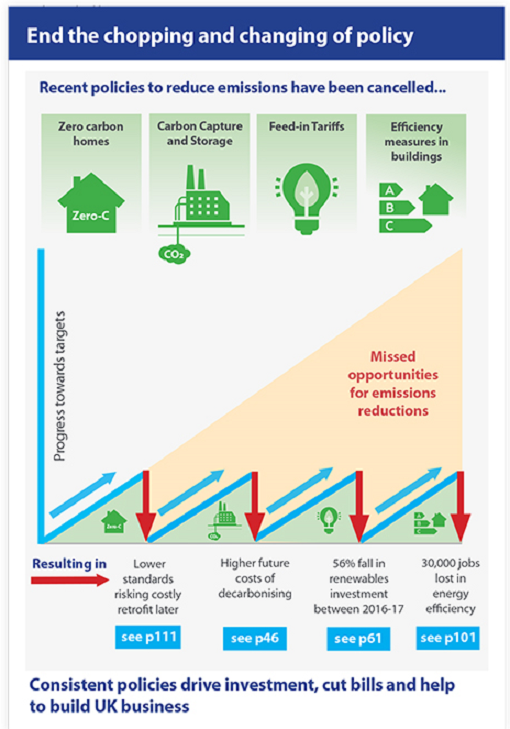Link to the video for those who need it
I was struck by Ed's passion and thought back to the 2015 General election and the Labour manifesto that promised to re-focus the UK economy around the ethos of sustainable energy. As I listened to Ed I could not help imagining where our country would be now if Labour, led by Ed had won that election ......... the promised 1 million jobs in sustainable energy ............. increased funding for climate change related research and development ......... no withdrawal or dilution from the UK commitment to be a leading global force for the environment .............. no abandonment of UK initiatives to decrease UK carbon emissions .......... no fracking ..................... oh and of course no Brexit involving a withdrawal from EU environmental laws and regulations.
Link to the SERA New Ground magazine election special 2015
Link to the SERA New Ground magazine election special 2015
Returning home to Derbyshire on the train I sat thinking about the evening and wondered ........... what is the state of play in the UK in 2018. Have we made progress or are we as a nation backsliding? Researching this courtesy of East Midlands Trains wifi led me to this document:
Committee on Climate Change publication/reducing-uk-emissions-2018-progress-report-to-parliament/. This committee was created in 2008 as an independent, statutory body whose purpose is to advise the UK Government and Devolved Administrations on emissions targets and report to Parliament on progress made in reducing greenhouse gas emissions and preparing for climate change.
This initial overview chart taken from the 2018 report illustrated the success of the 2008 act but also highlighted what Ed was talking about, that we have to put the environment at the heart of everything we do:
The verdict of this cross-party and independent committee on Tory performance since 2010 is damning:
That cancelled policy chart (sorry about the quality of reproduction) references cuts that have had a direct effect here in Derbyshire. The County Council had planned 3 Solar parks whilst local Transition Belper activists tried to resurrect a Hydro facility at Ambergate ........ all were cancelled as a direct result of government cuts to sustainable energy projects.
 |
| I urge you to read the full document so that the betrayal of the present Tory government of the spirit and intention of the 2008 Climate Change Act can be understood |
Ed referenced a SERA article in Labour List
Its worth reading this article by Jake Sumner, the co-chair of SERA:
I value being a member of SERA because it provides a focus for climate change and environment thinking in the Labour Party. It's not just about national and international policies but provides a means by which Labour Councillors and activists (be they parish, borough or county) can promote ecologically sound policies in their local area. As Ed urged, the environment should be at the heart of everything we do and SERA helps to make that possible. A good place to start is this SERA publication:
The Power Book published in collaboration with the Cooperative Party and the Local Government Information Unit.
For more information provided by SERA this is the link - sera.org.uk - and of course the link offers you the chance to join and reap the benefits; not least of which is the excellent house magazine New Ground and a chance to attend events, discussions and seminars plus more local activities. SERA was founded in 1973 so is looking forward to 2023 when it will be celebrating 50 years of environment campaigning.
Link to SERA New Ground webpage
Link to SERA New Ground webpage




























